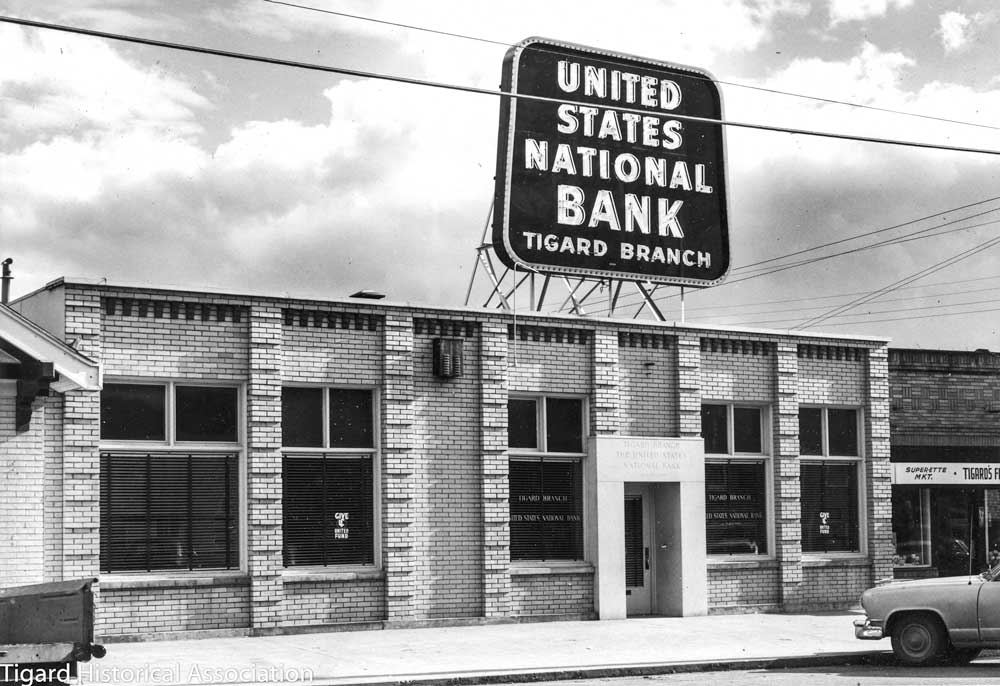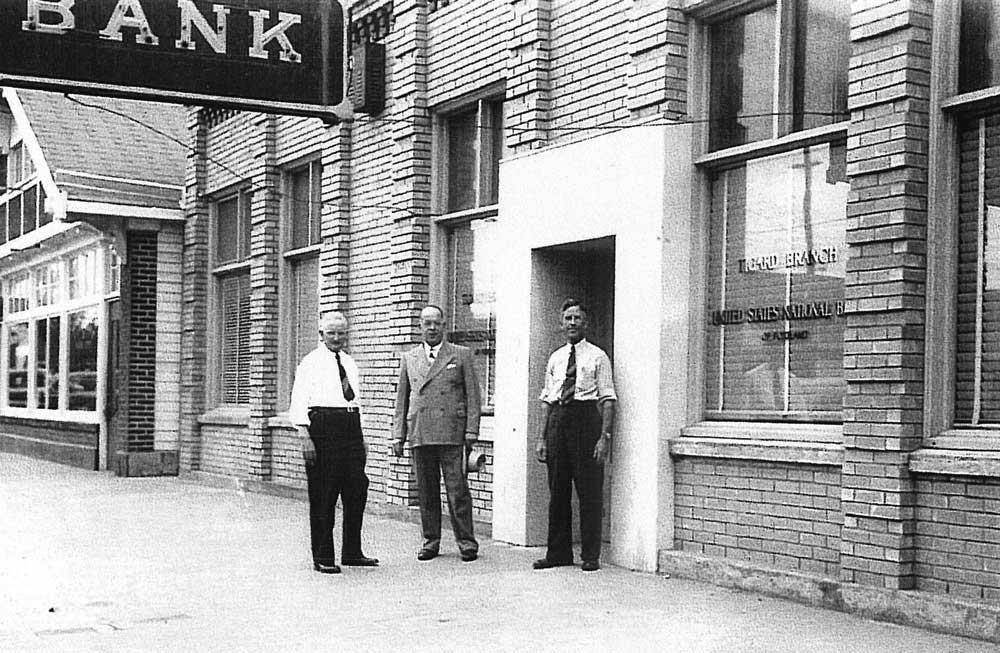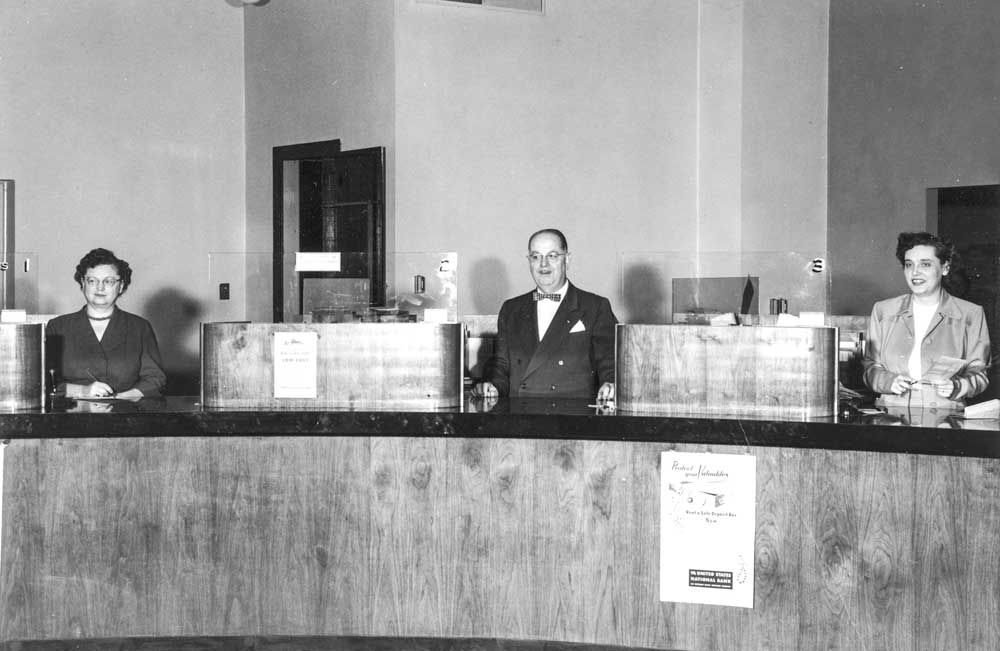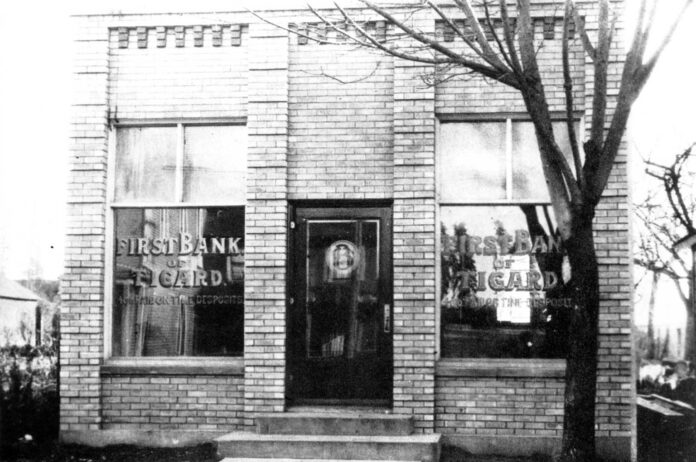
Early banking began when temples called ziggurats in the Middle Eastern Mesopotamian civilizations like Sumer collected grain in the form of taxes and distributed the surplus to the poor or made loans using grain as collateral. Formal accounting records began with the Code of Hammurabi around 1700 BCE.
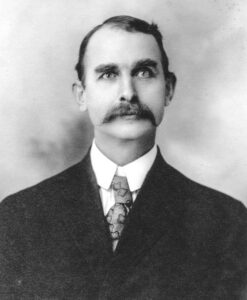
After the inception of coined money in Greece, Rome and China, state taxes were stored in temples. In Renaissance Italy, the Medici family pioneered early banking concepts with its Medici branches advertising bancos, the origin of our word bank. A banco was a long bench and underneath was a strong box for storing money and valuables.
Eventually, the receipts for the stored money became bills of exchange and circulating paper currency. Charging interest on loans and paying interest on deposits developed and encouraged the growth of financial institutions. The term bankrupt is a corruption of banco rotta, meaning “broken bench.”
The First Bank of Tigard
The First Bank of Tigard was established to meet local farmers’ needs, eliminating the long travel to neighboring towns like Portland or Hillsboro for banking. The inspiration for the bank and its first president was Charles F. Tigard, the son of Wilson Tigard, for whom the city of Tigard is named.
Charles Tigard served as bank president from its inception on April 5, 1919, until his retirement in 1942. The bank was first capitalized with $15,000 and was located in a new brick building on Tigard’s Main Street in Old Town. This brick building had been constructed by H.F. Bonesteel and remains in its original location today, surrounded by other buildings along Main Street.
Charles F. Tigard was a recognized community leader. He had served as a state legislator in 1895 and 1911, operated the Tigardville Store on Pacific Highway, and previously managed the family farm. He had named the area East Butte “Tigardville” when he opened a postal station in his general store in 1886.
Leadership and Community Ties
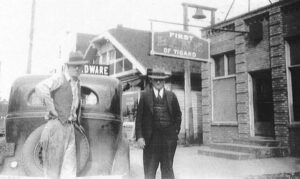
Fritz Elsner became the vice president of the bank, William M. Evans became the cashier, and Arthur Vincent served as assistant cashier. Serving on the Board of Directors were Herb McDonald, Chris Christiansen, T.H. Williams (secretary of Pacific State Fire Insurance Company), and James MacNaughton of Portland.
Business was brisk, with many local Tigard farmers making deposits and seeking property loans. Due to the rapid growth, Clara McDonald, Herb’s daughter, was brought in as another assistant cashier in 1922.
The bank had a reputation for honesty and integrity and patrons enjoyed doing business with their friends and people they knew and trusted. Charles Tigard related to other farmers and spoke a common language of crops, fertilizer, and irrigation. Everyone was eager to promote reliable credit and a safe haven in which to deposit profits. All of the bank’s officers and the board also served in the local Odd Fellows Lodge, supported local churches, and were active members of the farmers’ Tigard Grange.
Innovations and Security
The First Bank of Tigard kept up with new innovations, adding an electric sign above the Bank in 1925 and a new neon sign in 1929. Inside were windows displaying “cashier” and “exchange,” and the building’s first floor offices were heated by a wood stove.
For security, the bank installed a state-of-the-art burglar alarm, and its front windows facing the street were made of bulletproof glass—a nod to the “Roaring ‘20s” Jazz Age and the contemporary stories of gangsters in the newspapers. A large interior vault was added in 1938, followed by 160 safety deposit boxes in 1939.
The First Bank of Tigard maintained its good reputation for security throughout its history, even throughout the Great Depression. While banks in Multnomah, Beaverton, Sherwood, and Wilsonville all closed, the First Bank of Tigard and the Oswego Bank remained open and weathered the depression of the early 1930s. President Franklin D. Roosevelt (1933-1945) had inspired faith in the national banking system, and the Tigard bank responded by keeping its doors open and the institution solvent. During the Depression, the bank’s deposits actually exceeded its withdrawals.
Acquisition and Legacy
The First Bank of Tigard was purchased on March 3, 1944 by the United States National Bank of Portland (U.S. Bank). William Evans stayed on as the new U.S. Bank branch manager to promote continuity until he retired in 1946. This new branch bank was very modern with florescent lighting inside the original brick bank building on Main Street.
Curtis Tigard, the son of Charles F. Tigard, became the new U.S. Bank Branch manager replacing Evans in 1946. In 1960 the U.S. Bank branch was moved from Main street to Pacific Highway. Curtis Tigard retired and Charles Siemans became the new manager.
When the city of Tigard was incorporated on Sept. 11, 1961, the first location for City Hall was in the old First Bank of Tigard brick building. In the 1980s, City Hall moved to Burnham Street and later to its present site on Hall Blvd. In 1994, the original bank building was purchased from the City of Tigard by Michael Marr. This building remains a historic site on Tigard’s Main Street.
